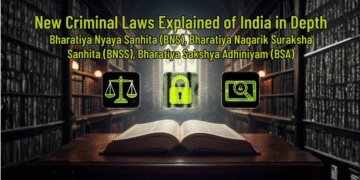Most of the confusion arises during the exam if you are not well aware of the exam syllabus. UPSC GS Paper 1 syllabus is also no exceptional case. UPSC GS syllabus for GS paper is very crucial for candidates. It is the first hurdle that aspirants need to cross for proceeding further. Like other subjects, the UPSC General Studies syllabus is also elaborated. So, if you check it carefully, it won’t be very hard. In the following article, we tried to keep it clear for you. In addition, we also added a little glimpse of the UPSC GS 3 syllabus too.
Information That Aspirants Should Know about GS 1 and GS 3 Papers
Aspirants already know that these are the two of four GS papers in UPSC Mains. Also, both of them are subjective type. So, candidates have to study subjects like History, Geography, etc. UPSC GS Paper 1 contains 250 marks in the exam likewise GS 3 paper. As for UPSC GS 3 syllabus, they need to study technology and others.

UPSC General Studies Syllabus
In order to do well in the UPSC GS paper, you need to know the syllabus very well. Otherwise, there will be a high chance to miss some topics. And, UPSC doesn’t allow silly mistakes. It is really tough to go through it. Thus, to avoid those mistakes check the syllabus beforehand. Have a look at what you have to read.
History
Indian Culture and Heritage
- Art forms like paintings, classical dance forms, and music. Similarly, folk dance, theater, pottery, and martial arts. Then, it comes to literature. Aspirants have to read about ancient to modern Indian literature in the UPSC GS syllabus. First, there are Sanskrit, Pali, and Prakrit literature. Second, early Dravidian and medieval literature. At this time, there were famous women poets who left their mark on Bhakti. Lastly, medieval literature trends and modern literature.
- As for architecture, Indian architecture is influenced by many things. So, UPSC general studies syllabus included it. Firstly, Harappan, temple, and cave architecture. Then, after the Islamic invasion changed the style. Indo-Islamic, medieval, and rise of modern architecture began. We can also see Buddhism and Jainism’s influence on Indian architecture. After that, rock-cut architecture. Lastly, the rise of colonial architecture in the modern period.
Indian History (Middle Eighteenth Century – present)
UPSC GS syllabus included it for GS paper. Well, in this part, you have to read about the social and economic conditions of society. Then, European invasion and British conquest. Afterward, politics and its after-effect on society and economy. You also have to read social and cultural reform movements here. It includes the uprising against the British raj before 1857.
India’s Struggle for Its Freedom
- Revolution in 1857
- India’s growing Nationalism. Economical and political unification throughout the country. Impact of western education and press.
- Rise of Revolutionary Movements. Communalism, international effect, Boycott movement, etc.
- Rise of Mass Nationalism. Movements led by Mahatma Gandhi. Simon Commission and Nehru report. Political and social reformation and the Government Act of India in 1937.
- Partition & Freedom: Quit India Movement. Then, Netaji Subhas Chandra Bose, and his INA. Thereafter, Cripps Mission and partition of India. Finally, Freedom.
Post-Independence Situations
UPSC GS paper 1 syllabus included it and world history also. It is important to know both Indian and world history equally. Check it below.
- First, the after-effect of partition and tribal matters. Then, regional and official language issues. Most importantly, battle with Pakistan for Kashmir and China.
- Reformed economical situation. Green evolution and industrial turnovers.
- New political era, party domination, and regional parties.
- Women’s position in modern India and communalism & Naxalism.

World History
- Renaissance and the industrial revolution.
- Reformation, the French revolution, and the beginning of the slave trade.
- Capitalism, imperialism, and colonialism.
- The reason behind WWI and the Russian revolution.
- After the effect of WWI and the rise of the League of Nations.
- Rise of Fascism and Nazism, movements in Asia and Africa.
- Start of WWII, its cause and effect. Impact of WWII on the rest of the world.
- Developments in Asia and Africa, the collapse of the Soviet Union.
- Vietnam and the Korean War, the rise of communism. The spread of capitalism, socialism, and communism.
Well, these are the history topics for UPSC general studies syllabus. Furthermore, look forward to know rest of the syllabus for UPSC GS paper.
Also check out: Best History Books for UPSC – Ancient & Modern (IAS Exam)
Geography
World Geography
- Everything about Earth – from origin to present state. Landform & Geomorphic evolution, and continent distribution.
- Hydro-cycle along with oceans and seas. Almost everything about ocean-like waves, currents, salinity, etc.
- World climate and its changes. Further, the weather system.
- Components, formation, and types of soil. Soil erosion and steps to prevent it.
Natural Resources Across The World
- Types of resources and its distributions.
- Land, forest, water, agriculture, energy, and mineral resources.
- Types, distributions, and conservation of previously mentioned resources.
Industrial Distribution and Important Phenomena
- Classification and distribution based on their components – land, water, power, etc.
- Major industry distributions like iron, textile, etc.
- Cause of earthquakes. Also, its types, and effects.
- Tsunami, its cause, and effects-impacts.
- Volcano, its reasons, and volcanic lands.
- Types of cyclones.
- Impact of geographical changes and their example. Likewise, factors behind it and critical significance.
However, these are Geography syllabus for UPSC GS 1 paper syllabus. Further, after finishing the whole article you can easily understand UPSC GS Paper.

Indian Society
- Diversity in Indian society – linguistics, religion, tribe, culture, etc.
- Challenges and unity among this vast diversity.
- Examples of social diversity.
- Everything about women’s position in Indian society. Women empowerment and reform movements during this time. Women’s organization from the 19th century to the present. Challenges they had to face, issues.
- Population, over-population, and its cause-effects. Challenges rising from it, age structure. Population control policy of India and the initiation of it.
- Poverty and its growing consequences. Socio-economic problems, inequality. Poverty reduction policies and its effect so far.
- Urbanization, its challenges, and problems. Government steps on this matter.
Globalization, Communalism, Secularism
- Globalization and its impact on Indian society. Factors behind it. Its effect on Indian culture and women’s position.
- Types of social empowerment. Government initiatives on it.
- Past and present communalism in India. After that, its characteristics, causes, and consequences.
- Concepts, causes, and consequences of Regionalism. Its types and Federalism.
- Indian secularism, its nature, concept, and challenges.
Therefore, these are everything you need to know about UPSC GS Syllabus. Therefore, hope you won’t get confused while solving the UPSC GS paper. But not only this, we’ve gathered a little bit of the UPSC GS 3 syllabus as well. Check it out.
Go through: UPSC History Syllabus – IAS Exam (CSE) Optional Syllabus
General Studies 3 Syllabus
As for UPSC GS 3 syllabus, you will get a brief idea about it from the following list. Have a quick look.
- Science & Technology: First, AI, Space, and defense Technology. Then, Gene Editing. Higgs Boson particle and dark matter, etc.
- Biodiversity, its types, and the environment.
- India’s economical development.
- All about disaster management and PM Cares Fund.
- Similarly, India’s security issues, challenges, terrorism, money-laundering, etc.

Why Aspirants should know GS Papers Syllabus in UPSC
We mentioned it already. Nevertheless, GS paper 1 is subjective type paper. So, it is better if you know the syllabus thoroughly. Because it’ll help you to make a firm grasp over the topics. In this way you won’t miss anything about any subject. In addition to it will also help in solving UPSC GS paper on your own.
UPSC General studies paper 1 mostly contains humanities subjects. There are History, Geography, and Indian society. On the other hand, UPSC GS 3 syllabus contains science-based subjects. There are Science & Technology, Biodiversity, Economy, and Disaster management. All you have to do is read everything in detail. It will surely help in your UPSC preparation.
Frequently Asked Questions Regarding UPSC GS Syllabus
Well, overall yes. But for the IAS exam, it is more extensive. And also, they select topics randomly for the IAS Gs syllabus.
Of course, the more you practice, the more you will get better. There is no second opinion on this matter.
Firstly, go through the syllabus thoroughly. Then, try to read each and every topic carefully. Don’t skip any part. Write down it in your own way. So that you can easily memorize it. Lastly, repeat all topics from time to time. Otherwise, there is a high chance to forget what you’ve read before.
Editor’s Note | UPSC GS Paper 1 Syllabus
Both GS 1 and GS 3 contain a total of 500 marks in the UPSC exam. So, don’t take it lightly. UPSC GS pare 1 and GS 3 syllabus has scoring subjects. With proper preparation, it can bring you a good number in the exam. Besides, it is natural to get ready fully prepared for exams like UPSC. Of course, there are many reasons behind calling it the toughest exam in India. You won’t get a chance to slack off. It requires all of your dedication. At last, hope previously mentioned UPSC general studies syllabus can help. All the best for the upcoming preparation. Keep it fighting.







